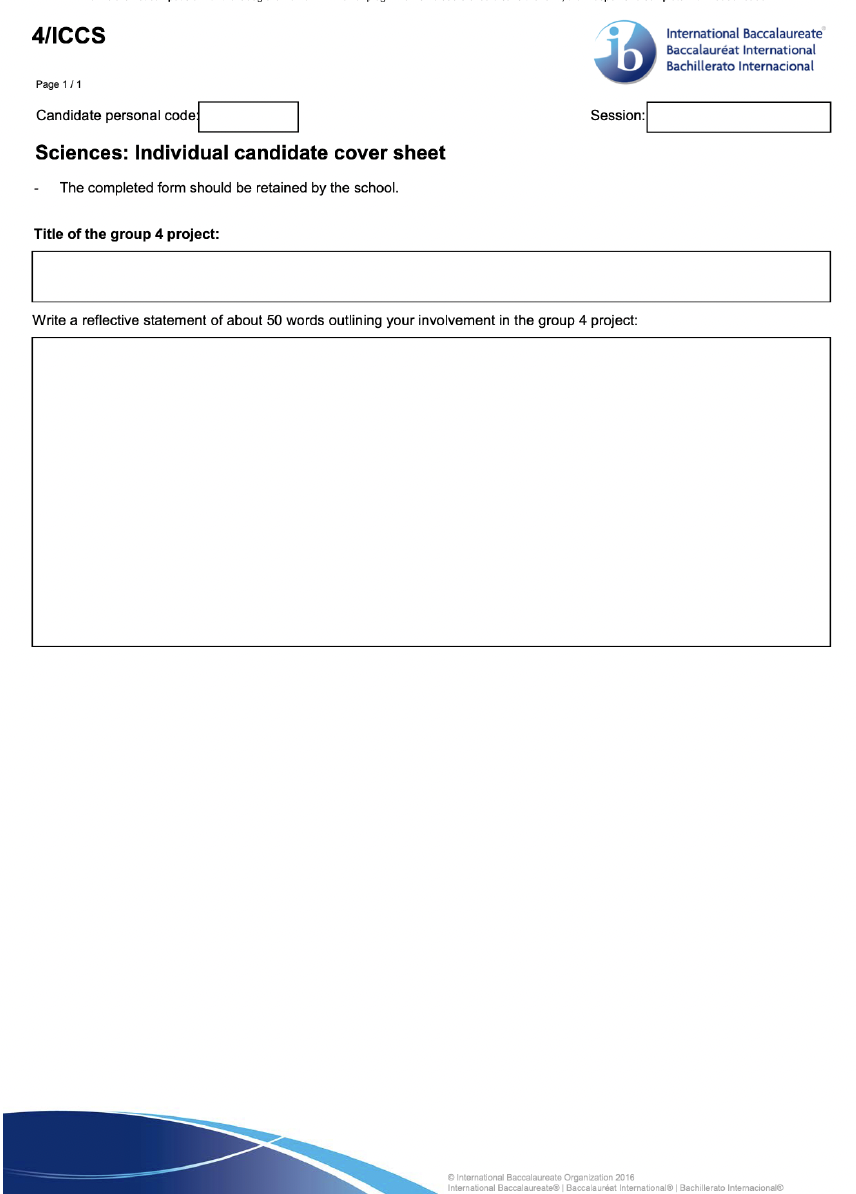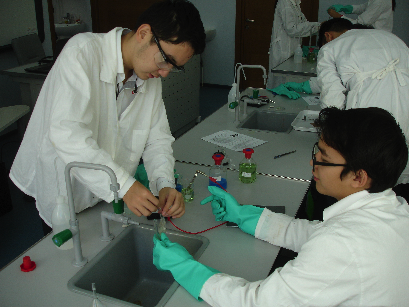Timing & organisation

 Introduction
Introduction
There are obviously several models as to how the Individual Scientific Investigation can be managed. Some teachers may have to cope with perhaps two Higher Level classes and one Standard Level class making a total of perhaps about 60 students. This may take a good deal more organisation than in smaller schools, or schools where the IB Diploma cohort is small, where teachers may only have to deal with a handful of students.
It is worth bearing in mind what the Guide says should be covered in the “approximately” ten hours allocated to the investigation. It should include
- An explanation by the teacher about the requirements of internal assessment.
- Work by students on the IA and time to ask questions.
- Consultation between the teachers and each student.
- Reviewing and monitoring the progress and checking authenticity.
What is does not seem to include is the time spent writing up the final version of the investigation nor of course the scaffolding required beforehand preparing your students in the skills needed for the investigation.
The first question to consider is when in the two year programme it might be undertaken.
Timing
The Individual Scientific Investigation counts 20% towards the final mark. Considering it is only ten hours work it is a high proportion of the marks and it is easy to see that both students and teachers will feel under pressure to gain as high a mark as possible. For example, it could make a significant difference between getting a Grade 6 or 7 for those students who want to go on to study Medicine. Students need to be well-prepared beforehand so it makes sense to leave it until sometime in the second year when they have already learned many of the skills required both in their chemistry lessons and perhaps from their Extended Essay work as well. This will also help those students for whom English is a foreign language. However, the demands elsewhere on students are high during the second year so you need to be sensitive to this and ensure that your IB coordinator draws up a timetable of individual deadlines for course requirements (TOK essay, EE and other subject internally assessed work etc.). Ideally some time in the first term of the second year would seem to be best. In fact most of the work will be done during the 150 h (SL) or 240 h (HL) allocated class time. The only time required outside of this will be for the students to write their final version after you have commented on their first draft.
Organising the 10 hours
The following is a suggestion as to how the ten hours work might be broken down into roughly three different phases. There should be considerable flexibility and possible overlap of the phases to accommodate the fact that different students work at different speeds and some may require more assistance than others.
First phase (approximately 2 hours)
I would allocate about two hours for the initial planning of the investigation. This will include an explanation by you of the requirements of the internal assessment. Make sure they are fully conversant with the assessment criteria. It will also give time for each student to come up with their own research question that is approved by you and time for them to plan how they will undertake their individual investigation. I would suggest that there is then a week or so before the next stage. This will give you enough time to help any student who is struggling and also time for you and/or your technician to sort out particular apparatus and make sure that all chemicals required are to hand.
Second phase (approximately 6 hours)
Students then have about six hours of class time to gather their data. This may be primary data from their own experimental work or secondary data obtained from other sources. It will also include background information to put the topic into context. To be sure of authenticity you should insist that all data, whether primary or secondary, is obtained by all the students under your supervision. If students are allowed to gather data at home or elsewhere then you will have no way of knowing for certain that it is all their own work. Ideally students should work on their own but they are permitted to carry out practical work in pairs or in a group if necessary. However they must collect their own data and do all the processing etc. on their own.
Third phase (approximately 2 hours)
During the third and final phase students should complete the analysis and processing of their data to produce a draft version of their findings. They should discuss this with you and you should give advice and make appropriate comments but not correct errors or ‘tell them how to do it’. The final version should be handed in by an agreed date; probably no more than one week after the ten hours has finished.
After you have marked the Individual Scientific Investigations you will then need to standardize internally if there are other chemistry teachers in your school who also have students completing chemistry investigations so that the same standard of marking is being applied to all chemistry students.
At some stage students will also need to complete the cover sheet, form 4/ICCS (available from My IB), to which they also have to add an approximately 50 word reflective statement about their involvement in the Group 4 Project.

Form 4/ICCS © IBO
Note that the version of the form 4/ICCS shown above is for the May and November 2022 sessions. Check on My IB that you have the correct version for the appropriate session. Also note that although it is still called a "cover-sheet" it does not now have the name of the Individual Scientific Investigation on it and it should be retained by the school, not sent to the IB.

 IB Docs (2) Team
IB Docs (2) Team 